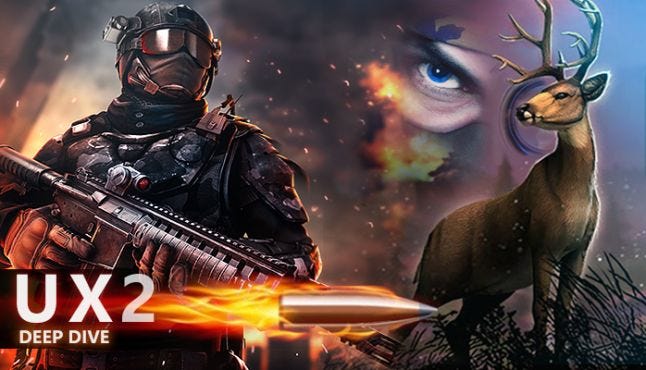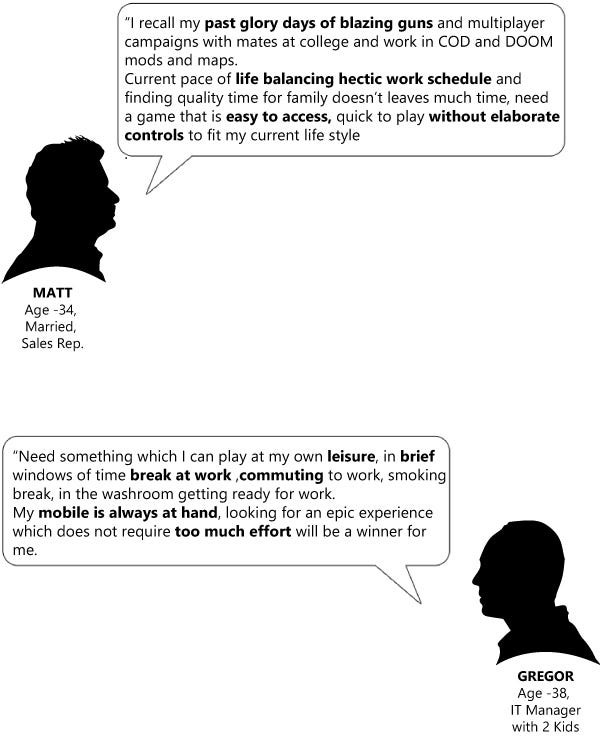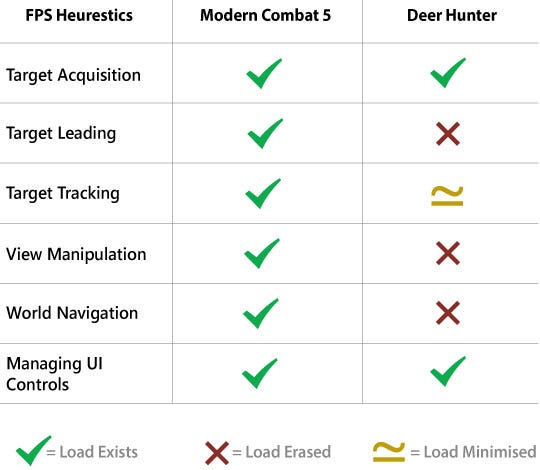
In Part 1 of this post, we looked at how mobile developers get around the problem of building convincing FPS experiences on mobile devices by reducing friction and providing extensive control settings for easing various parameters and magnitudes that a player has to typically manage on PC and consoles.
An approach which I call the 'Kitchen Sink'.
While 'kitchen sink' approach works to an extent for most hard core players craving for undiluted FPS experience on mobile, it creates high barriers into entry for mid-core and newer-to-the-genre casual players.

Some developers realise there are scores of young-adult players (who are now in their late 20's or early 30's) are dedicated FPS players of popular franchises like COD, TF2, GOW, DOOM on pc and console. But now as working adults, parents or in middle years, they simply do not have the luxury of time and the intense focus and dedication required for steep learning curves for hard core games. There are now other pressing priorities!

However, having been a ardent fan of the genre in the past, they still miss & crave for the adrenaline rush and thrill such games can offer.
It's just a question of identifying the market gap and providing this user base with avenues to fulfil their indulgence. Enter Glu Mobiles "Deer Hunter" and Hothead studios "Killshot" franchises.
Both games simplify the core loop of seeking and hunting targets by giving players the ability to do so at their own pace and convenience, with dramatically reduced and marginalised loads that make playing these games relatively a breeze for newbies and young adults alike.
Deer Hunter 2016 : CSR Racing with Guns?
Deer Hunter series has been long running successful franchise for Glu mobile, with Deer Hunter 2014 being one of it's most successful flagship brands.
Premise of Deer Hunter is a simple one adapted from famous PC series where players get to hunt animals in exotic locations around the world. For some people (including me) the concept of hunting wild animals may seem brutal, but for those into game hunting, it's a good avenue (definitely better then real hunting!). Deer Hunter does a good job of showing refined visuals which look convincing enough without being too gross.
Deer Hunter's core gameplay is essentially FPS based on energy mechanic with forced upgrades.

However if you compare it with heuristics we had defined in the first part which a typical FPS games demands from it's player base, you will see that the DH series totally erases many of them from it's gameplay.
.jpg/?width=461&auto=webp&quality=80&disable=upscale)
Target Acquisition: Player has to effectively acquire or lock on moving or static targets in order to score a kill.
Target Leading: Player has to effectively lead. For example, if an opponent is moving to the right of the player, the player should be able to easily target the mental proxy in order to successfully hit the opponent.
Target Tracking: Player has to track moving targets without constantly needing to reacquire the target. For example, if an opponent is moving to the right, the player should be able to smoothly and consistently follow the opponent without losing track.
View Manipulation: Player can manipulate the camera in any direction to complete the leading, tracking and acquiring tasks. A difference in speed at which player can manipulate the world view will affect his ability to track & lead fast moving targets.
World Navigation: The player should be able to navigate X, Y and Z axis in the game to over-come obstacles or jump over objects.
Managing UI Controls: Along with all the above said tasks, player has to be ablw to manage UI controls of load outs, abilities, switching scopes, using boosts, firing controls, reloading and/or changing weapons.
Game controllers map these onto the UI which helps reduce the load as they provide better mapping. But these are not part of standard mobile experiences.
Comparison of how DH fares with FPS load compared to MC-5

A quick glance above shows how loads are being erased in DH series compared to MC-5 resulting in a game play which, though not meant for hard core players, drastically lowers the steep learning and mastery curve while providing the adrenaline rush to casual and young adult players in small manageable time frames.

MC-5 vs DH 16 HUD
.jpg/?width=646&auto=webp&quality=80&disable=upscale)
At one glance you can see the difference in number of HUD controls between the 2 games. The HUD only has the scope button on the left and fire button on the right sides, with arrows to move left to right or back and forth, depending on the level design.



































